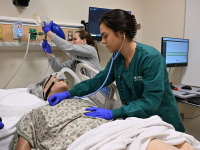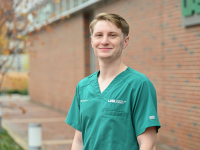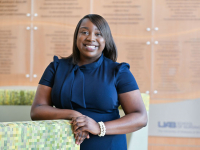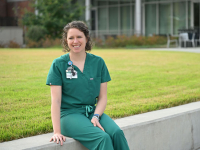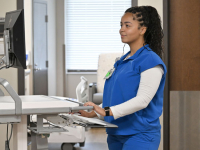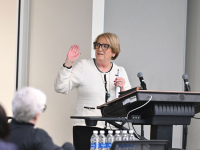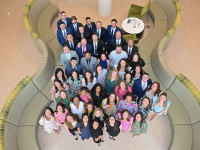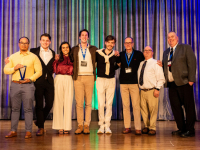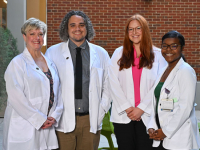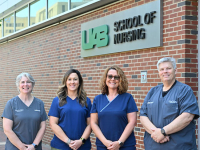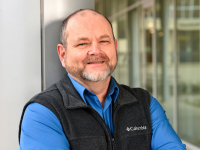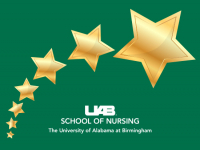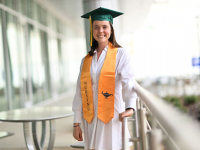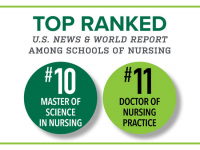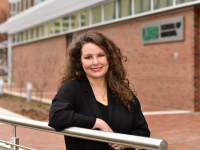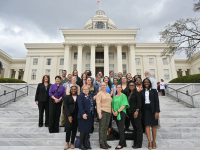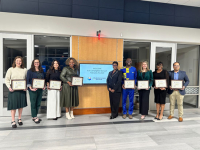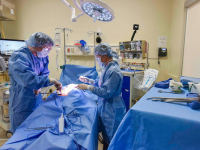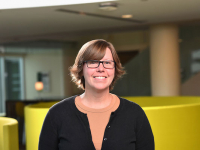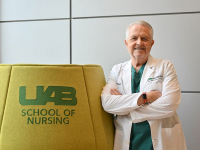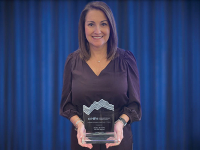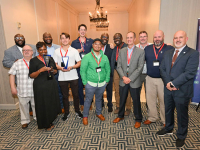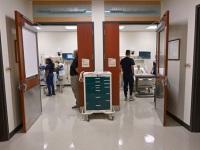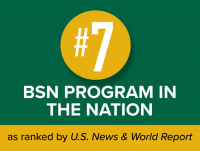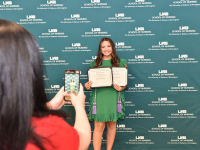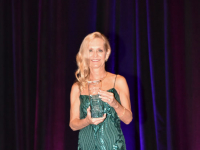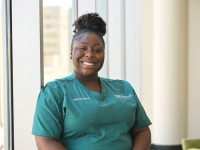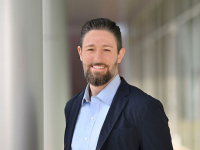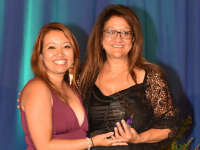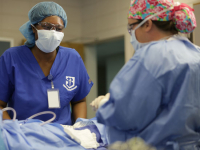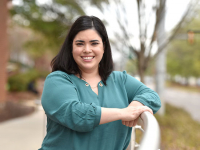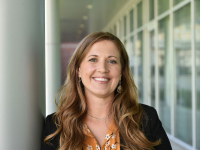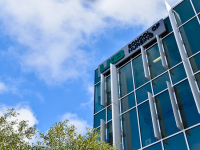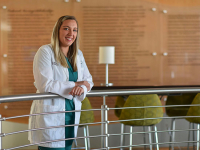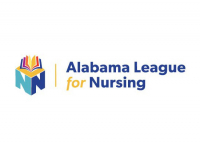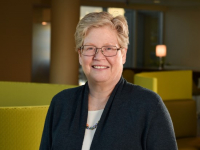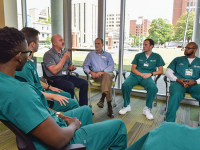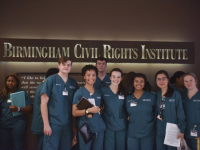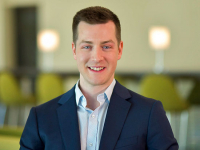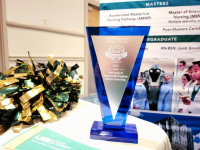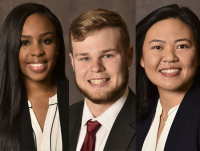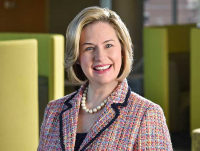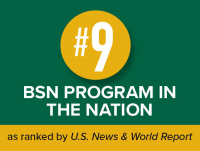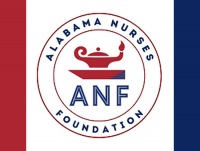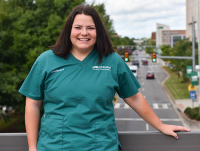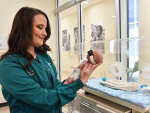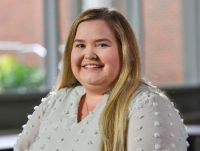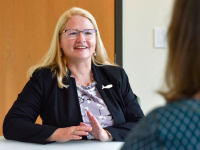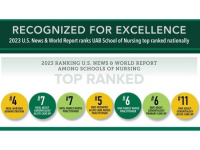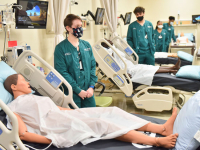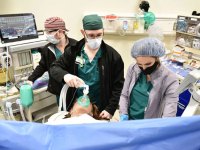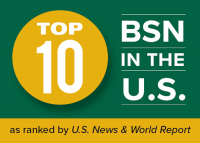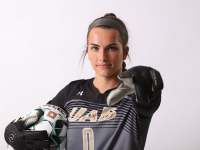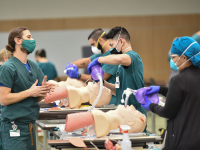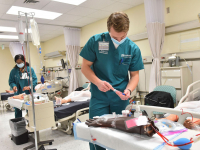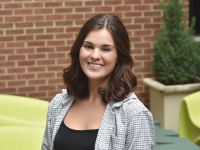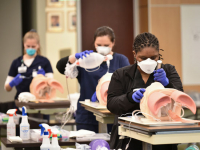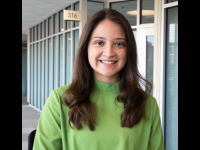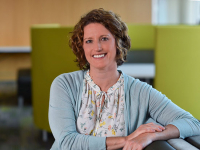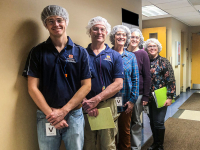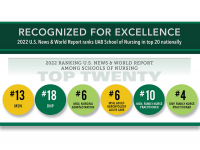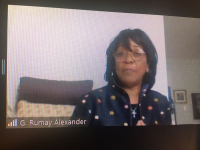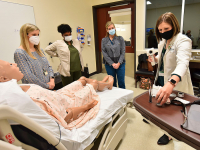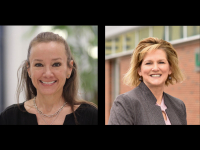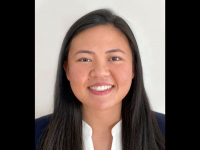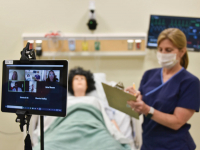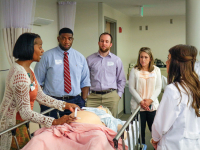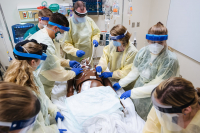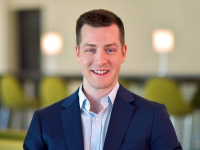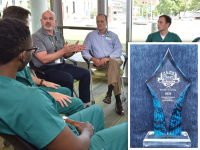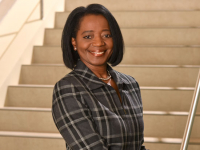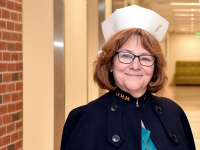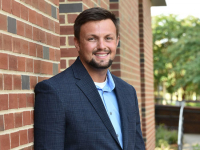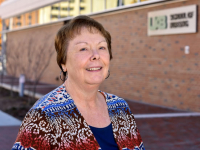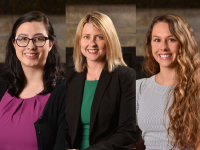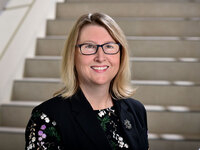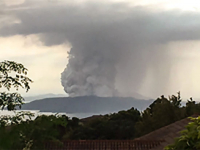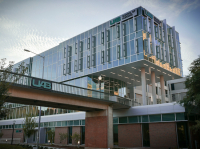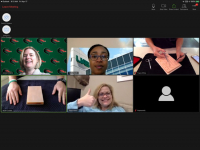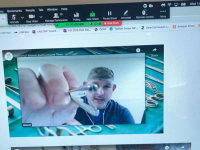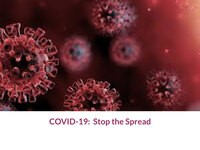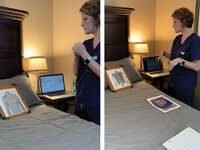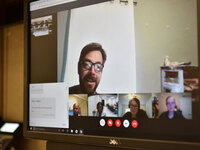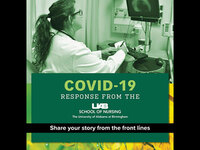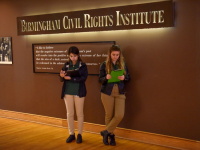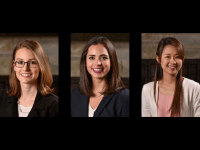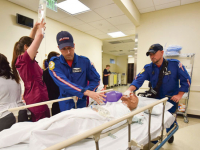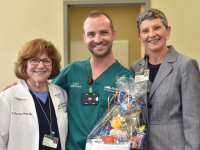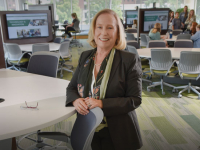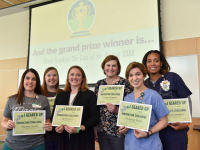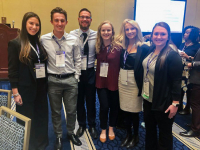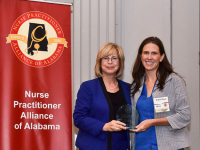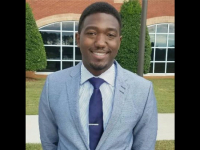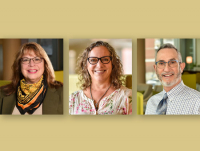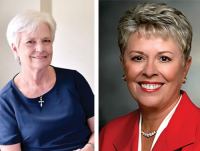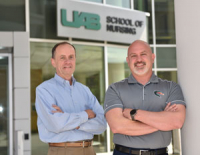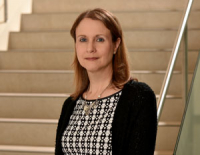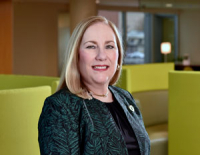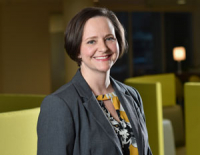Less than 1 percent of nurses in the United States hold research-focused doctoral degrees, making those who do a unique, accomplished group of people working to improve health care outcomes globally. The University of Alabama at Birmingham (UAB) School of Nursing Doctor of Philosophy (PhD) in Nursing program, the only one in Alabama, is an excellent choice for students seeking such a unique, world-class research-intensive pathway to higher education excellence.
A prime example of the incomparable uniqueness of the PhD in Nursing program at UAB and the faculty and students behind it is the cohort that came to the School in the fall of 2014 --which has chosen to call itself “The Sapsuckers.”

The cohort is made up of nine accomplished nurses -- Jessica Bahorski, MSN, RN, PPCNP-BC, WHNP-BC, Jennifer Bail, BSN, RN, Bryan Combs, MSN, CRNP, FNP-BC, CNL, ATC, Marla Couture, MSN, CRNP, ACNP-BC, Apryl Lewis, RN, MSN, CCTN, Rachael Mumbower, BSN, RN, Chance Nicholson, MSN, BS, CRNP, PMHNP-BC, RN-BC, Aoyjai Prapanjaroensin, BSN, RN, and Pauline Swiger, MSN, RN, CMSRN, CNL.
Its name, which was borrowed from the Yellow-bellied sapsucker woodpecker, has the market cornered on unique. Arguably the most important aspect of the cohort is that it is the first to enter into the program following a major revision in curriculum to make it more consistent with the American Association of Colleges of Nursing (AACN) guidelines for research-focused doctoral programs.
Faculty from the School spent almost two years revamping the curriculum, honing it into a pioneering, cutting-edge program that includes an important milestone qualifying exam between years one and two to assess how well the students absorbed their first-year information, and extensive research immersion experiences. At the same time, the recruitment and selection process for PhD students was enhanced, more faculty became involved in the interview process and student interests are now more closely matched with the research interests of the School’s PhD faculty.
“Data from our students confirm we are effective at different points all through the program,” said Associate Professor and PhD Program Coordinator Karen Heaton, PhD, CRNP, FNP-BC, FAAN. “‘The Sapsuckers’ happened to be the first cohort of students that went through that process, and they have demonstrated that the curriculum is strong.
“I think they are some remarkable people and that, combined with our strong recruiting and an extremely solid curriculum, allowed the stars to align and give us this great group of students.”
Heaton said she realized the Fall 2014 cohort was special within the first few weeks of the semester when its members took to heart an assignment for which there wasn’t even any class credit. As an exercise to help the members get to know each other better and establish a group identity, Heaton asked them to collectively decide on a name, an emblem or mascot and a motto for the cohort.
She even referenced Discovery, Atlantis and other names for ships, space shuttles and the like that inspire thoughts of exploration, research and reaching for the skies. What they came up with was … “The Sapsuckers.”
“When they first told me ‘The Sapsuckers’ I was kind of deflated until I read the explanation and then I was like ‘they get this,’” Heaton said. “It would have been very easy for them to have taken the example I gave them and just left it at that. But clearly they put time, effort and discussion into coming up with it and didn’t take the easy way out.”
“I think that is an important indicator about students in a PhD program because the PhD is surely not the easy way out.”
The initial idea for “The Sapsuckers” came to Swiger, a clinical nurse leader, promotable major and 15-year veteran in the United States Army, during a trip to the Birmingham Botanical Gardens. There she saw a tree that had holes all around it, and when she asked why, was told it was because of the Yellow-bellied sapsucker.
The guide explained that the bird made little “wells” in the tree from which to drink the sap, and that it could take the whole tree down if it drank too much. As she listened she envisioned other similarities between the bird and the cohort.
“It reminded me that if we take this PhD thing one bit at a time, we can conquer it just like this little bird can take down a whole tree,” Swiger said. “In addition, unlike other woodpeckers, this bird participates in a long migration and that reminded me of the long journey ahead for each of us. So my suggestion for our cohort name was ‘The Sapsuckers.’”
As part of an email exchange among members, it was noted that the sapsucker is vitally important to its ecosystem because other animals, birds and insects also partake of the sap from the wells. Bail noted that, as future scientists, the members will be creating the “wells of knowledge” that others in the community will drink from, and the decision on the cohort’s motto “Creating Wells of Knowledge” was also made.
Still, it took a little getting used to, even for the cohort members themselves.
“At first, like I am sure everybody does, I was ‘what is a sapsucker?’” Bahorski said. “But as I learned about the bird and what its role is, it made sense, and I was like ‘that’s really cool.’ So I don’t mind being called a ‘Sapsucker,’ and I am proud to be a part of this cohort with my fellow students.”
“I definitely follow up with anybody that I tell I am a ‘Sapsucker’ so that they understand it is a positive thing and a name that I now want to live up to.”
Swiger is a full-time student who relocated to Birmingham to continue her studies. Bahorski is full-time as well, but she is a distance-learning student living in Tallahassee, Florida. It is another unique aspect of the School’s PhD program, this blending of local and distance learners into a cohesive unit by a caring faculty and the use of technology.
“What’s interesting about the curriculum is that even if you are geographically here, you still do everything online,” Swiger said. “The way it works here, which I am thankful for, is that you actually have an assigned class time once a week or every other week in some cases. You log on, and you can see each other through your little webcam, and there’s a button where you can raise your hand when you want to talk next and have input.”
“When you use all those tools you feel more like you are sitting in a classroom versus feeling like you are on a computer. I think that is why our School of Nursing has had a lot of accolades for our program -- you still feel a connection to the classroom that other programs don’t necessarily have.”
 "The Sapsuckers" are, from left to right, Bryan Combs, Marla Couture, Pauline Swiger, Jennifer Bail, Rachael Mumbower, Aoyjai Prapanjaroesin, Apryl Lewis, Jessica Bahorski and Chance Nicholson.Bahorski, a pediatric nurse practitioner, agrees that the program’s format works well even for those who participate from afar.
"The Sapsuckers" are, from left to right, Bryan Combs, Marla Couture, Pauline Swiger, Jennifer Bail, Rachael Mumbower, Aoyjai Prapanjaroesin, Apryl Lewis, Jessica Bahorski and Chance Nicholson.Bahorski, a pediatric nurse practitioner, agrees that the program’s format works well even for those who participate from afar. “I really feel part of the group,” Bahorski said. “I like the program because there are weekly classes, and it seems like you’re able to stay better connected with each other and with the School because you are held accountable on a regular basis.”
“The concept of the program, the location, UAB’s reputation, and the faculty and their areas of focus, those are some of the reasons why I chose the School.”
In just their second year in the program, many of “The Sapsuckers” have published in peer-reviewed scientific journals or made presentations at top-level conferences. The PhD faculty is extremely proud of what the group has accomplished so far and excited about what it will accomplish down the road and how that will reflect on the School.
“I think they are going to change the world in the future,” Heaton said. “They are going to be the people that will replace my generation of faculty and carry on the strong work of their mentors. I just keep thinking of the term ‘world class.’
“There are some fabulous PhD programs in the United States, but I would put ours up against any of them, and ‘The Sapsuckers’ are proof as to why. I honestly can’t wait to be hobbling around on my cane at conferences in the future and see them and all that they will have accomplished.”
For more information about the UAB School of Nursing PhD program, click here

